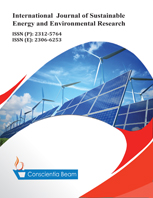Albert Einstein, World of Dices and Hydrocarbon System Analysis
DOI:
https://doi.org/10.18488/13.v11i2.3154Abstract
Albert Einstein, Caesar and others have used dices as a metaphor for risks and probabilities; indirectly reverting to the experience human kind may have with natural processes in its environment contemporarily with human evolution. It will be shown for example by concentrating on the exploration of hydrocarbons that the rules of a dice-game can be used to better understand the importance of the number of ruling parameters (dices), in this case geological parameters. Especially the Rotliegend Gas Play of the North German Basin belongs to the very complex hydrocarbon systems with more than 70 independent parameters. The Dutch Rotliegend Play for comparison can be characterized by only 10 parameters and is therefore of a simple type. Processes on earth like the formation of systems of hydrocarbon fields as well as environmental systems (e.g. river systems, lakes, islands, sedimentary basins) are subordinated to the dice of nature like in a Casino and are steered invisibly by a selection of rules of the game that one understands as natural laws. The complexity of a system as well as the variedness of its “members” that may be found in anthropogenic systems as well (different properties in thinking, self-reflection, feedback-capabilities, combative and ambitious behavior of individuals with the target to climb upwards in a ranking matrix) is decided by the number of the influencing parameters, represented by dices. Like in a dice-game the exploration of hydrocarbons is unsolvable connected to luck and bad-luck, coincidence and necessity, and to past and future.

